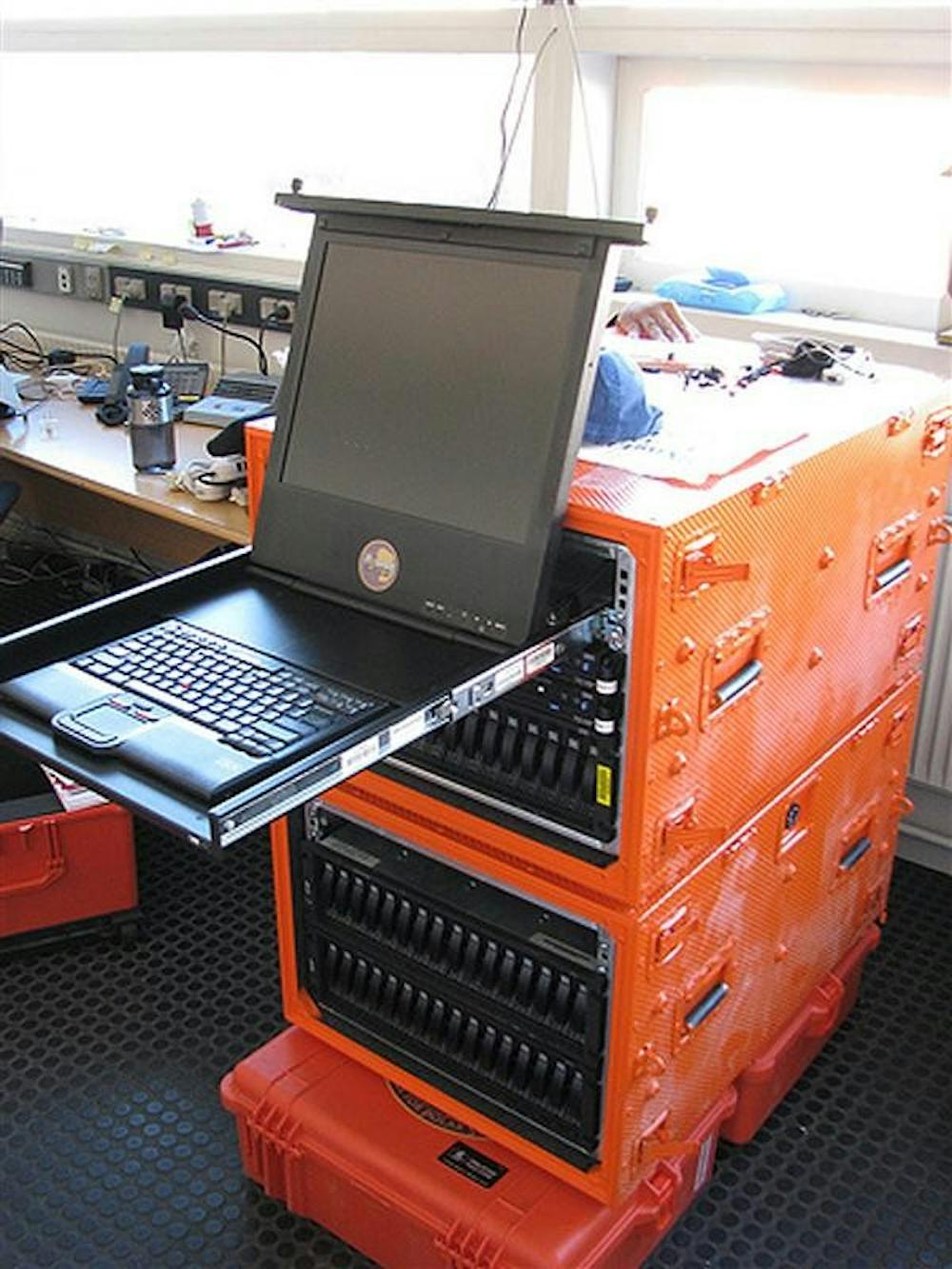If you’re headed for Antarctica, Mom says to wear a hat. But if you’re taking your laptop, you’d better call in the experts.
A team from IU’s Pervasive Technology Labs and University Information Technology Services bundled up powerful computing equipment and sent it off to Antarctica on Friday.
The equipment is specially designed for the Polar Grid Project, an organization formed to provide better information about Earth’s shrinking ice caps.
The Polar Grid Project, which is funded by a $1.96 million grant from the National Science Foundation, is a collaboration of IU, Elizabeth City State University in North Carolina and the Center for Remote Sensing of Ice Sheets at the University of Kansas
The idea was to make the equipment as simple as possible, so that one or two people can use it in the field without access to tech support for up to 12 weeks, said David Hancock, senior manager of high performance systems for UITS.
But it was a logistical feat to make the hardware durable enough to withstand extreme conditions, said Craig Stewart, chief operating officer of IU’s Pervasive Technology Labs.
Shipping the hardware and physically managing data were significant hurdles, he said.
But the team, with the University of Kansas, put a lot of effort into designing solar panels that could recharge the computers’ batteries in the field.
They will analyze the project’s findings and make them available on the organization’s Web site, Stewart said.
“This will provide better data than ever before on what is happening to the ice sheets,” he said.
As a result, scientists could gain insight into the global climate change.
“Nobody really knows how bad the situation is,” Stewart said. “We will play a critical role in learning the state of ice sheets.”
Stewart said IU is involved in the project largely because of Geoffrey Fox, principal investigator for the Polar Grid Project and chair of the IU School of Informatics.
“Fox is one of the world’s leading experts in grid computing,” Stewart said.
Fox said the scientific community still has a limited understanding of how glaciers recede.
“There is no current model that people trust,” he said. “We need to build realistic models of glaciers.”
All the data will be available to the public, Fox said. But the project is far from over.
“In the future, we’d like to send something with a little more computing power,” Hancock said.
Indiana University hardware sent to Antarctica
Equipment could private new insights on global climate change

Get stories like this in your inbox
Subscribe





